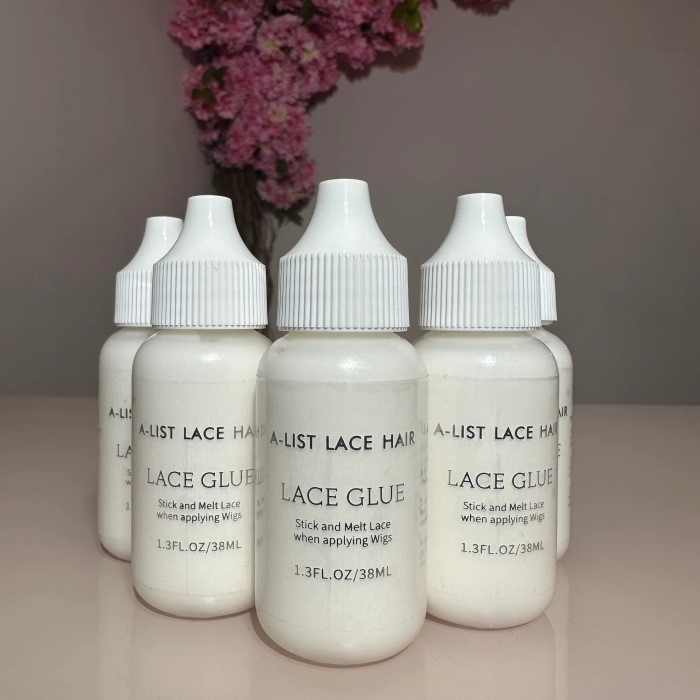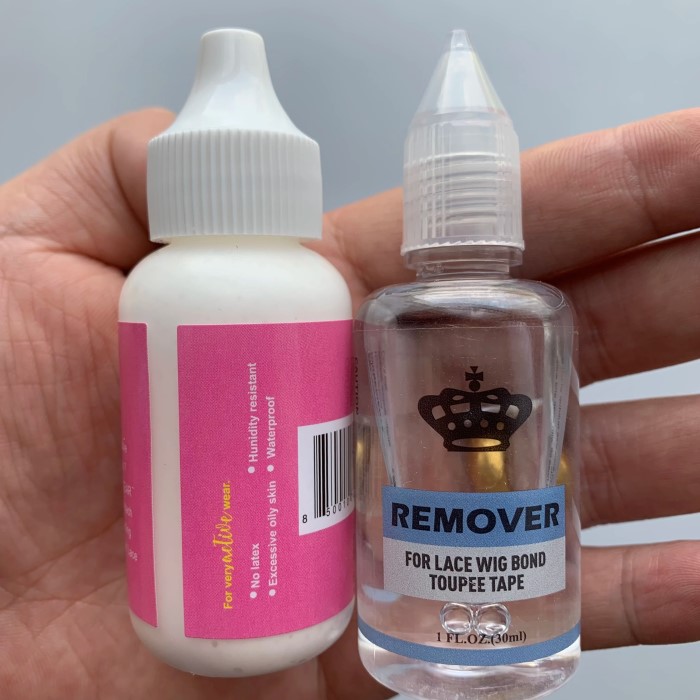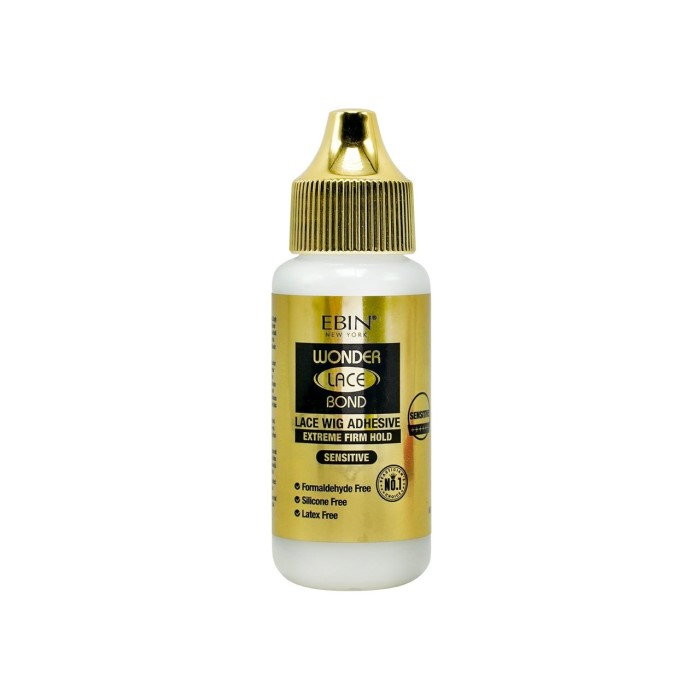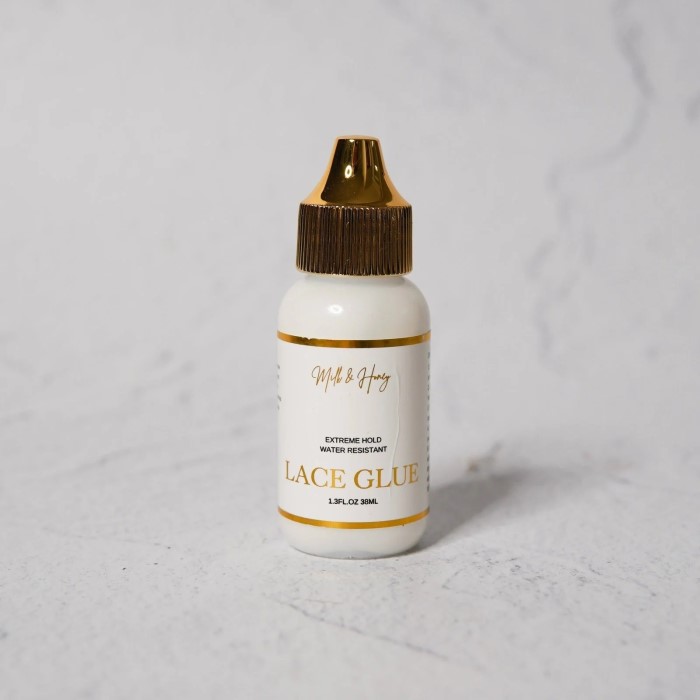
Choosing the Right Wig Glue for Your Hairpiece: 2025 Guide
Introduction
Choosing the right wig glue is crucial for anyone using hairpieces. Whether you’re preparing for a special event or wearing wigs regularly, the right adhesive can make all the difference. Many people underestimate the importance of wig glue, but it serves as the foundation for a comfortable and secure fit. In this 2025 guide, we delve into what to consider when selecting wig glue for your hairpiece, ensuring you can enjoy both style and stability.
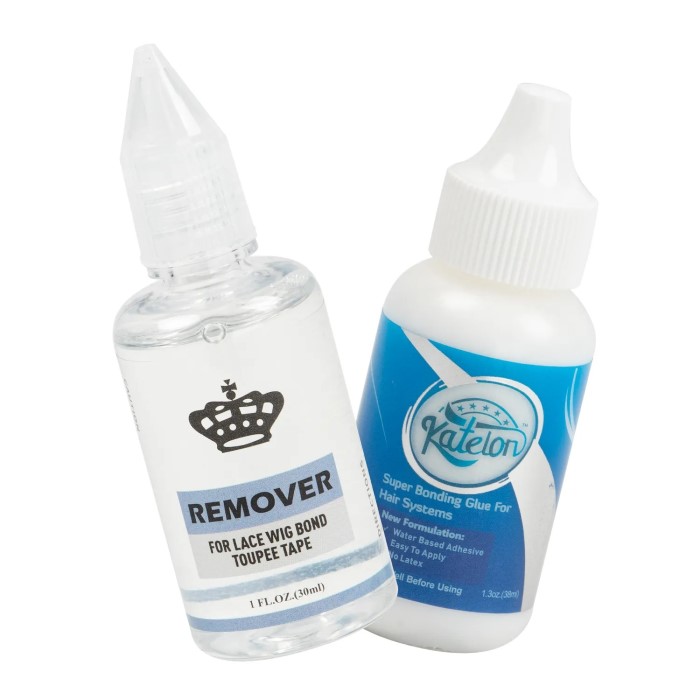
Types
Selecting the correct type of wig glue is vital for a secure and comfortable fit. Different types cater to various needs and preferences. Let’s dive into the two main types available on the market today.
Water-based Adhesives
Water-based adhesives are popular for those with sensitive skin. These glues are gentle and tend to cause less irritation. They provide a moderate hold, making them perfect for daily wear. They are also easier to clean up, requiring only water for removal. However, their hold might not withstand extreme weather or sweating. Therefore, consider your daily activities when choosing a water-based adhesive for your wig.
Solvent-based Adhesives
Solvent-based adhesives offer a stronger hold compared to water-based alternatives. They are ideal for prolonged wear or for those needing extra security, such as performers or athletes. Solvent-based glues are waterproof and can resist high temperatures. However, they can be harsher on the skin and may require a special remover for cleanup. When using solvent-based wig glue, it’s important to follow a strict removal routine to protect your skin and hairpiece.
Factors to Consider
When it comes to securing your hairpiece, choosing the right wig glue is essential. Consider these factors to ensure a comfortable fit and lasting hold.
Skin Sensitivity
Your skin’s reaction to wig glue is crucial. For sensitive skin, opt for water-based adhesives. They are less likely to cause irritation or allergic reactions. If you have tough skin, solvent-based glues can be an option for a stronger hold.
Hold Strength
The hold strength you need depends on your activities. If you lead an active lifestyle or encounter many movements, choose a solvent-based adhesive for a firmer grip. For everyday use with minimal movement, water-based glues should suffice.
Climate and Lifestyle
- Impact of Environment: The performance of wig glue is significantly influenced by your surrounding environment. Factors like temperature and humidity can greatly affect how well the adhesive holds up throughout the day.
- Hot and Humid Climates: In warmer climates, particularly those with high humidity levels, a stronger adhesive is usually necessary. Solvent-based glues are often recommended for these conditions, as they provide a more secure hold that can withstand the extra moisture and heat without loosening.
- Indoor and Controlled Environments: Conversely, if you primarily wear your wig indoors where the temperature and humidity are regulated, a water-based adhesive may suffice. These adhesives are generally lighter and easier to remove, making them suitable for everyday wear in stable conditions.
- Activity Level Considerations: Your lifestyle and daily activities also play a role in adhesive selection. If you engage in activities that involve sweating or prolonged exposure to heat, opting for a stronger adhesive is wise, even if you’re mostly inside.
- Seasonal Changes: Seasonal weather patterns can also affect what type of glue is most suitable. During summer months with higher temperatures, using stronger adhesives might be necessary, while cooler seasons may allow for the use of lighter products.
- Personal Comfort and Preference: Personal comfort is essential when choosing a wig adhesive. Individuals who tend to sweat more in hot conditions may prefer a stronger glue, while those who prioritize ease of removal in controlled environments may lean towards gentler options.
- Trial and Error: It’s advisable to experiment with different types of wig glue to determine which works best for your specific climate and lifestyle. Trying out several products will help you find the right balance between hold and comfort.
Ease of Application and Removal
Consider also how easy the wig glue is to apply and remove. Water-based options usually clean up with just water, while solvent-based adhesives need a specific remover. Go for wig glue that fits your level of commitment to maintenance.
The Best Brands
Finding the right brand of wig glue can make all the difference in your hairpiece experience. With many options available, it’s important to choose a brand that stands out in terms of quality, hold, and safety. While no single brand suits everyone, some have earned high praise and reputation in the market.
Comparing Top-Rated Products
When comparing wig glues, look for products with strong hold, gentle ingredients, and positive feedback. Some top-rated wig glues include Walker Tape Ultra Hold, Ghost Bond XL, and Bold Hold Extreme Cream. These brands often feature advanced formulas designed for different skin types and environments. Walker Tape is renowned for its long-lasting hold, Ghost Bond for its waterproof formula, and Bold Hold for its comfort and strength.
User Reviews and Recommendations
Before making your purchase, read through user reviews. They provide real-world insights into how the wig glue performs. People with similar lifestyles or skin sensitivities can offer valuable advice. Online platforms like Amazon, beauty forums, and social media are great places to find reviews. Look for recurring comments on hold, comfort, and ease of use.
Application Tips for Wig Glue
Proper application is key to ensuring your wig stays in place all day. Follow these straightforward tips for the best results.
Preparing Your Scalp
Before applying wig glue, cleanse your scalp. Use alcohol wipes to remove oils and sweat. This helps the glue bond stronger to your skin. Ensure your skin is completely dry before proceeding. A clean, oil-free surface is crucial for effective glue application.
Applying the Glue Correctly
Apply a thin layer of wig glue evenly across your hairline. Don’t use too much; excess can weaken the bond. Wait till the glue becomes tacky—this usually takes a few minutes. Then, carefully place your wig onto the glue, pressing gently to secure it. If using solvent-based glue, follow the specific drying time instructions.
Maintenance and Care for Hairpiece
Regular maintenance extends your wig’s lifespan. Remove your wig daily if using water-based adhesive. If you’re using a strong, solvent-based glue, you may do this less often. Always clean your wig and scalp thoroughly to prevent residue buildup. For solvent-based glues, use the recommended removers. Treat your hairpiece gently during cleaning to avoid damage.
Alternatives to Traditional Wig Glue
In certain cases, traditional wig glues may not be the best fit for everyone’s needs. It’s important to know that there are effective alternatives that can provide a secure hold without the use of standard adhesives. Below, we explore a few options that are worth considering.
Wig Tapes
Wig tapes are a popular alternative to liquid wig glues. They come in pre-cut strips or rolls that you can cut to size. These tapes are double-sided and provide a strong hold. They are easy to apply and remove, making them suitable for those looking for convenience. Because they don’t involve messy liquids, they also reduce the risk of spreading glue onto the hairpiece or skin.
Silicon Sheets
Silicon sheets offer another non-liquid option for securing wigs. These sheets are gentle on the skin and can be a good choice for people with sensitivities to traditional wig glue. They work by creating a non-slip surface between the wig and the scalp. Silicon sheets are reusable and can be washed, offering a long-term solution that’s also cost-effective.
Temporary Adhesives
- Definition and Purpose: Temporary adhesives are a type of wig adhesive designed for those who want a less permanent solution. They are perfect for individuals who wear wigs occasionally or for a limited duration, allowing for flexibility in styling.
- Forms Available: These adhesives typically come in either spray or cream forms. The spray format allows for quick and even application, while cream adhesives provide a thicker consistency that can be easily spread over the desired area.
- Light Hold Benefits: Temporary wig adhesives provide a lighter hold compared to stronger alternatives like traditional wig glues or tapes. This makes them suitable for everyday wear where a less aggressive bond is desired.
- Ease of Removal: One of the greatest advantages of temporary adhesives is their ease of removal. They can typically be washed out at the end of the day without the need for harsh solvents or special removers, making cleanup simple and hassle-free.
- Ideal for Sensitive Skin: For individuals with sensitive skin, temporary adhesives can be an ideal choice. They are often formulated with gentler ingredients, minimizing the risk of irritation or allergic reactions that stronger products might cause.
- Usage Scenarios: Temporary adhesives are particularly useful for special occasions or events where wigs are worn for a few hours. They allow users to achieve the desired look without the commitment and potential discomfort of more permanent adhesives.
- Considerations for Use: While they are suitable for short-term wear, users should be aware that temporary adhesives may not provide the same level of hold or longevity as traditional options. This should be taken into account when planning activities that involve movement or exposure to moisture.
Health and Safety Precautions
When using wig glue, safety is just as important as hold and comfort. Let’s discuss how to use wig glue safely to protect your health.
Testing for Allergic Reactions
Before applying wig glue, do a patch test. Apply a small amount on your skin, wait 24 hours. Check for any redness, itching, or swelling. If you react, choose another glue. This simple step can prevent allergic reactions and skin damage. Always test, even when trying a new brand.
Safe Removal Practices
Remove your wig glue safely to keep your skin and hairpiece in good shape. Use a recommended adhesive remover for solvent-based glues. For water-based adhesives, warm water and a gentle cleanser will work. Never pull or force the wig off. It can harm your skin and damage the wig. Be gentle and patient during removal for the best care.
Troubleshooting Common Issues
Many individuals experience issues when using wig glue. Understanding how to handle these problems can help you enjoy a seamless wig-wearing experience.
Lifting Edges
Lifting edges are a common issue with wig wear. Here’s how to address it:
- Check if the adhesive’s tackiness is correct before applying. A too-wet glue won’t hold well.
- Press firmly on the edges after placing your wig. Hold for a few seconds for a better bond.
- For stubborn edges, try using a blow dryer on a cool setting to help set the glue.
- If lifting occurs during the day, carry a small bottle of wig glue for quick fixes.
Remember to apply wig glue in a clean, controlled environment for the best adhesion.
Residue Buildup
Residue buildup can make restyling your wig difficult. To combat this:
- Clean your scalp and hairpiece regularly to prevent glue accumulation.
- Use a soft brush or cloth with a suitable cleanser to remove residue gently.
- For heavy buildup, consider a scalp protector before applying wig glue. This can make cleaning easier.
By maintaining your wig and scalp, you can minimize residue and prolong the life of your wig.
Skin Irritation
Skin irritation from wig glue can be uncomfortable. Here’s how to help prevent it:
- Use hypoallergenic or sensitive skin-formulated wig glues to reduce the chance of irritation.
- Don’t apply glue on broken or injured skin. Let any cuts or rashes heal first.
- Moisturize your skin after removing the wig to restore its natural balance.
- If irritation persists, discontinue use and consult a dermatologist.
Taking care of your skin is important. Use wig glue with caution and consider your skin’s health first and foremost.
Conclusion
In conclusion, choosing the right wig glue for your hairpiece is crucial for a secure and comfortable fit. By understanding the types of adhesives available, considering various factors, and applying them correctly, you can enjoy a seamless look. Remember to take care of your wig and scalp, to enhance both longevity and comfort. With the proper knowledge at your disposal, you are now equipped to make informed decisions about wig glue, ensuring your hairpiece remains a reliable and stylish assistant in your life.
